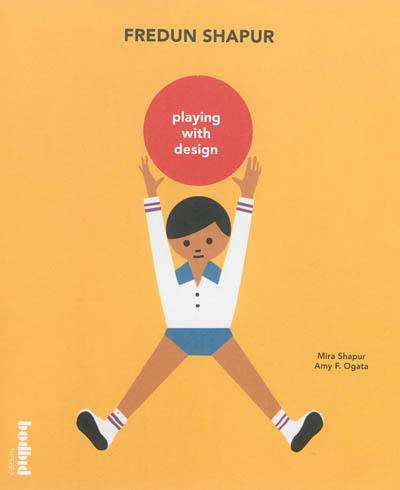
Fiche technique
Format : Broché sous jaquette
Nb de pages : 108 pages
Poids : 500 g
Dimensions : 21cm X 25cm
ISBN : 978-2-919459-05-6
EAN : 9782919459056
Fredun Shapur
playing with design
Quatrième de couverture
Tout comme Bruno Munari ou Charles Eames, le designer Fredun Shapur (né en 1929) a porté sur le monde de l'enfance un regard particulièrement audacieux et inventif. Entre les années 1960 et 1980, il a conçu des jouets pour des fabricants tels que Naef en Suisse, Galt Toys en Grande-Bretagne, et surtout Creative Playthings aux États-Unis. Des puzzles en bois aux déguisements en sacs en papier figurant toutes sortes d'animaux, les jouets de Fredun Shapur ont toujours le pouvoir de surprendre et d'enchanter, tandis que son graphisme coloré et épuré reste étonnamment moderne. Fredun Shapur a aussi illustré des livres pour enfants et créé l'une des identités graphiques les plus remarquables dans le domaine du jouet, en redéfinissant l'image de Creative Playthings grâce à un logo devenu iconique.
Cette première monographie sur Fredun Shapur rend un hommage longtemps attendu à son oeuvre multiforme, témoignant de sa conviction que le jeu, tout en demeurant la clé de l'apprentissage, se conjugue avec le rêve et l'imagination.
Like Bruno Munari or Charles Eames, the designer Fredun Shapur (born in 1929) made a particularly daring and inventive contribution to the world of children. Between the 1960s and 1980s he designed toys for manufacturers such as Naef in Switzerland, Galt Toys in Great Britain, and above all Creative Playthings in the United States. From wooden puzzles to animal disguises made from paper sacks, Fredun Shapur's toys still have the power to challenge and enchant, while his use of color and graphic refinement remain strikingly modern. Fredun Shapur also illustrated children's books, and produced one of the most remarkable corporate identities for a toy company, defining the Creative Playthings image through a logo that has become iconic.
Recognition of Shapur's diverse oeuvre is long overdue, and this first monograph reveals his commitment to the belief that play and the imagination are at the heart of learning.





